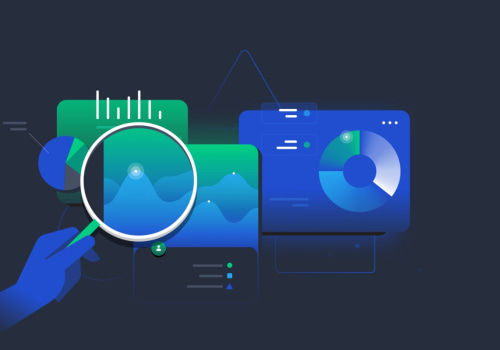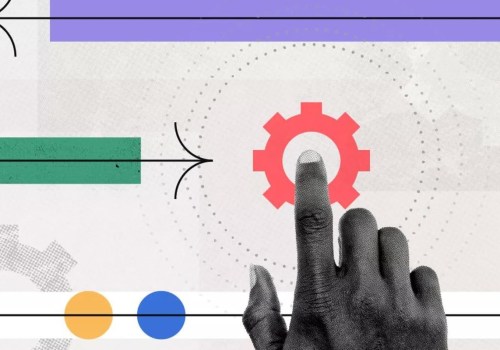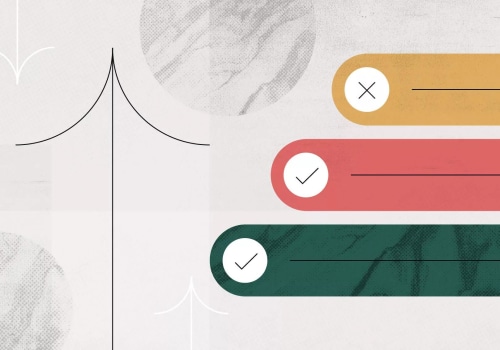Data visualization is a powerful tool for helping businesses gain valuable insights from their data. It enables users to quickly and easily interpret and understand large amounts of data, allowing them to make better decisions, identify trends, and develop actionable strategies. With data visualization, businesses can gain a deeper understanding of their data, allowing them to maximize the value of their data and make informed decisions. This article will provide an introduction to data visualization and how it can be used to gain insights from data.
We'll discuss why data visualization is important, the different types of visualizations, and how to interpret the data effectively. Finally, we'll provide some tips for getting the most out of your data visualization efforts. Data visualization is a powerful tool that helps to transform complex data into easy-to-understand visuals. From helping to identify trends to making predictions and understanding relationships, data visualization enables us to make informed decisions backed by data. This article will provide an overview of data visualization, including its history, the different types of visualizations, and best practices for creating successful visuals.
History of Data Visualization
– Data visualization has been used for centuries as a way to gain insight from data.From early examples such as William Playfair’s graphical representation of trade volumes in 1786 to the more modern tools used today, data visualization has evolved greatly. Early visualizations were often used for mapping and tracking trade routes, but modern visualizations are used for a much wider range of applications. Today, data visualization is used for data exploration and analysis, making predictions, and identifying correlations and trends.
Types of Data Visualization
– There are many types of data visualizations available, including charts, graphs, maps, histograms, heatmaps, scatter plots, and more. Each type of visualization is suited to different types of data and different applications.For example, charts are great for presenting numerical data over time or comparing different values, while heatmaps are ideal for displaying geographic data and identifying trends. It is important to choose the right type of visualization for the data in order to best display the information.
Best Practices for Creating Data Visualizations
– Creating effective data visualizations requires careful consideration of the data and the intended audience. When designing a visualization, it is important to choose the right type of visualization for the data and to consider the purpose of the visualization. The colors and other design elements should be chosen carefully to ensure that the visualization is easy to read and understand.It is also important to include only essential information in the visualization in order to avoid clutter.
Examples of Successful Data Visualizations
– There are many examples of successful data visualizations from real-world applications. For example, Google Maps has used heatmaps to visualize population density in cities around the world. Similarly, social media platforms have used interactive graphs to show user engagement over time. Finally, online retail stores have used bar graphs to show sales figures over time.Examples of Successful Data Visualizations
Data visualization is a powerful tool that can make complex data easier to understand and interpret.By creating visuals, we can help identify trends, make predictions, and better understand relationships. To better understand how data visualization works, it can be helpful to look at examples of successful visualizations. One example of a successful data visualization is the Sankey Diagram. This is a type of flow diagram used to represent the flow of energy or resources between multiple nodes. It is used for a variety of applications, including energy and resource analysis, process mapping, and inventory control. Another example is a treemap, which is a type of graphical representation used to display hierarchical data.
This type of visualization is great for seeing the relationship between different data points, as well as quickly identifying areas that could be improved upon. It is commonly used in project management, financial analysis, and other applications. Finally, heatmaps are another type of data visualization that can be used to represent complex data sets. This type of visualization is great for seeing patterns in data that would otherwise be difficult to identify. Heatmaps are commonly used in market research, web analytics, and medical research. These are just a few examples of successful data visualizations.
By understanding the different types of visualizations available and the applications they are best suited for, we can create visuals that are both informative and visually appealing.
Types of Data Visualization
Data visualization is an invaluable tool that can be used to explore and interpret data. There are a variety of techniques and tools used in data visualization, each of which can be used to gain deeper insights into data. Some of the most common types of data visualization include charts, graphs, maps, and more. Charts are one of the most popular and widely used forms of data visualization.They are used to present information in a concise, structured format and can be used to visualize relationships between different variables. Charts can include line graphs, bar graphs, histograms, scatter plots, and more. Graphs are another type of data visualization tool that can be used to represent data in a visual way. Graphs can be used to explore the relationships between different variables and can be used to identify trends or outliers in the data.
Common types of graphs include pie charts, radar charts, heat maps, and more. Maps are another type of data visualization tool that can be used to explore spatial relationships between different variables. Maps can also be used to identify patterns or trends in the data. Common types of maps include choropleth maps, dot maps, flow maps, and more.
In addition to the above types of data visualizations, there are also a variety of other tools and techniques that can be used to explore and interpret data. These include heat maps, word clouds, sparklines, tree diagrams, and more. Each of these tools can be used to gain valuable insights into the data.
Best Practices for Creating Data Visualizations
When creating data visualizations, it is important to consider the type of visuals that are best suited for the data being presented. Different types of data require different types of visualizations in order to make them more understandable.It is also important to think about how the data will be presented in a way that makes it easier for viewers to comprehend. Here are some tips for creating successful data visualizations:Choose appropriate visuals:Before selecting a visualization, it is important to consider the type of data being presented. Different types of visuals are better suited for different types of data. For example, line graphs are best used for time-series data, while bar graphs are better suited for categorical data.
It is also important to consider the context of the data when selecting a visualization. For example, a pie chart may be more appropriate for comparing percentages, while a map may be better suited for visualizing geographical data.
Present data in an easy-to-understand format:
It is important to consider how the data will be presented in order to make it easier to understand. This includes choosing appropriate visual elements such as colors, labels, and fonts. Colors should be used to highlight key points or trends in the data, while labels should clearly identify what each element represents.Fonts should be legible and easy to read. Additionally, it is important to consider how the data will be organized in order to make it easier for viewers to comprehend.
Use annotations and labels:
Annotations and labels can help to clarify the meaning of a visualization by providing additional context. Annotations can be used to highlight specific points or trends in the data, while labels can be used to clearly identify elements and provide information about them. Annotations and labels can also help to direct viewers’ attention to key points or areas of interest.Include interactive elements:
Adding interactive elements such as filters and drill-down menus can help viewers interact with and explore the data more deeply.Interactive elements can provide additional context and insights into the data by allowing viewers to filter or drill down into specific areas of interest. Additionally, interactive elements can help viewers quickly identify patterns or trends in the data.
Use simple visuals:
It is important to use simple visuals that are easy to understand and interpret. Complex visuals with too many elements can be overwhelming and difficult to comprehend. Keep visuals as simple as possible while still conveying the necessary information.History of Data Visualization
Data visualization has been used for centuries as a way to make sense of complex data sets.As far back as the 16th century, maps were being used to present data in a graphical form. During the 19th century, Charles Joseph Minard created a now famous chart that depicted Napoleon’s 1812 march into Russia. The chart included information on temperature, geography, troop numbers, and direction. In the early 20th century, scientist Walter Bradford Cannon developed the field of information graphics by creating diagrams to represent physiological processes. This helped pave the way for modern day data visualization. The 1960s saw the emergence of computer-aided data visualization, which allowed for more complicated visualizations.
This technology was further refined in the 1970s with the invention of statistical graphics and then again in the 1990s with the development of dynamic, interactive visuals. Today, data visualization is used by a variety of professionals, from marketers to scientists, to better understand and communicate data. With the rise of artificial intelligence and machine learning, data visualization is becoming increasingly important as a way to gain insight into complex datasets. In conclusion, data visualization is a powerful tool that can help us understand complex data in an easy-to-understand format. By leveraging the right tools, techniques, and best practices for creating successful visuals, we can gain insights from our data to make informed decisions. Data visualization has a long history, ranging from simple diagrams and charts to sophisticated interactive visualizations.
We have explored the different types of data visualizations and the best practices for creating successful visuals. With this knowledge, businesses can unlock powerful insights from their data to drive better decisions and increase their competitive edge.






